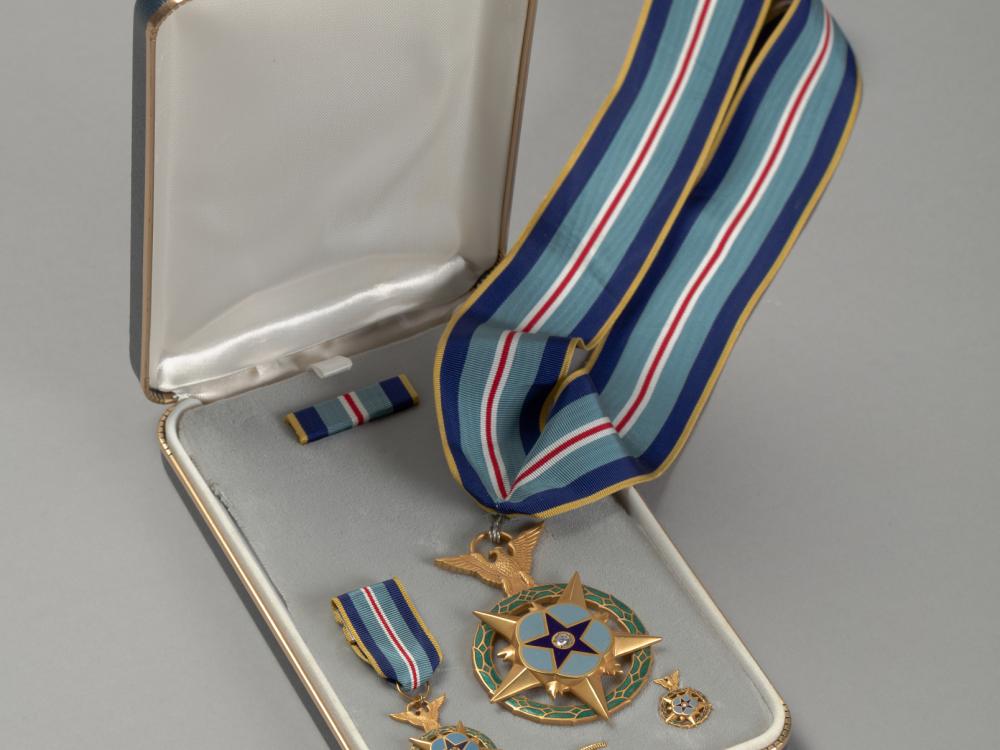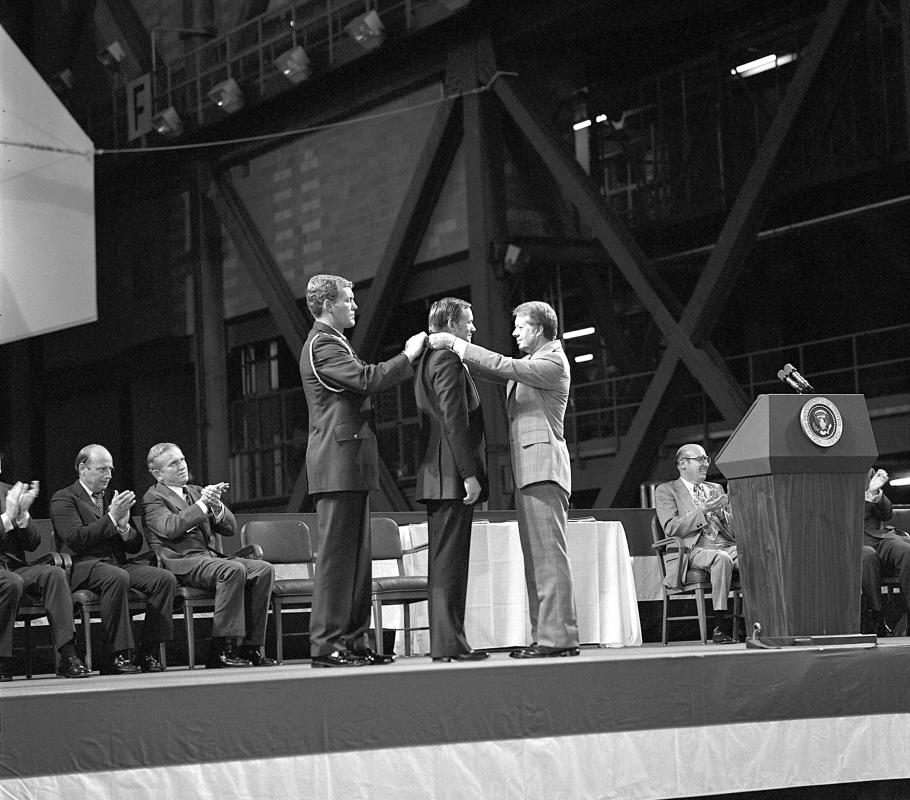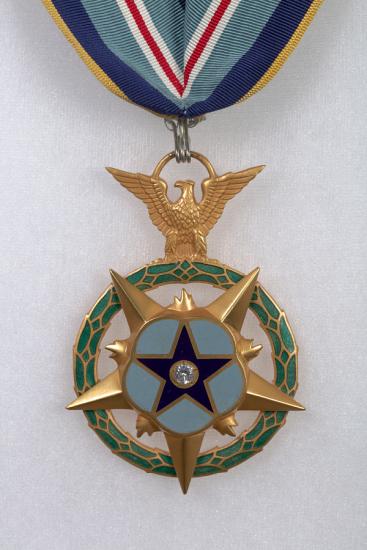
Neil Armstrong’s Congressional Space Medal of Honor
Jul 24, 2020
How does one commend the most remarkable astronauts, those who have gone above and beyond as they braved the dangers of spaceflight on behalf of their country? In 1969, Congress authorized the creation of the Congressional Space Medal of Honor to recognize “any astronaut who in the performance of his duties has distinguished himself by exceptionally meritorious efforts and contributions to the welfare of the Nation and mankind.” (In later years, the addition of “or her/or herself” recognized the addition of women to the astronaut corps.) Despite “Congressional” being in the title of the award, the NASA Administrator actually nominates the potential recipients, who then receive the award from the sitting president in Congress’s name. Neil Armstrong, the first astronaut to set foot on the Moon during the Apollo 11 mission in July 1969, and the commander of Gemini 8 in 1966, was one of the first six recipients awarded the medal on October 1, 1978, by President Jimmy Carter.
Astronaut Neil Armstrong received the first Congressional Space Medal of Honor from President Jimmy Carter, assisted by Captain Robert Peterson.
Neil Armstrong was a fitting astronaut to be among the first recipients of the Congressional Space Medal of Honor because the symbolism used on the physical medal itself includes elements that directly reference Apollo 11’s historic achievement. The symbols that adorn medals or other awards (such as military service emblems or spaceflight mission patches) are never random or capricious. Rather, in the strong tradition of military decoration as well as phaleristics (the study of awards, including medals), the various elements are carefully chosen with great meaning attached to each, as well as to the combination of all of the symbols together. The U.S. Army Institute of Heraldry designed this award in that custom, and the significance of the choices described in the published procedures (using the gender-specific language of the time) is fascinating to read:
The laurel wreath, a symbol of great achievement, with the overlapping star points, simulates space vehicles moving to greater accomplishments through space. The flames signify the dynamic energy of the rocket era and the imagination of the men in the space program of the United States. The stylized glory cloud alludes to the glory in the coat of arms of the United States and to the high esteem of the award. The dark blue voided star symbolizes the vast mysteries of outer space while the brilliancy of the feat is represented by a diamond. The eagle with wings raised in the spirit of peace represents man’s first landing on another planet.
The inclusion of a set gemstone (the central diamond) makes the award very unusual: no other American decoration includes that feature.
The scarlet center line on the white band symbolizes the courage of the astronauts in the nation’s manned space program and the fire power of rockets that carry the crew through the earth’s atmosphere. …the light blue is the same color as the chief of the shield of the coat of arms of the United States which appears on the President’s flag. The dark blue symbolizes the hostile environment of space. the gold edge representing success and accomplishment. Red. white and blue are also the national colors of the United States.
Although the award is a civilian one, it is authorized to be worn as a military decoration. As such, the specificity of the ribbon’s colors and pattern can stand in for the award itself. A section of ribbon was included in the presentation box as a ribbon bar to be worn for occasions when the recipient preferred not to wear the full-sized medal or the miniature provided.
Presidents who have presented the Congressional Space Medal of Honor include Carter, Ronald Reagan, George H.W. Bush, and Bill Clinton. The last President to award the Congressional Space Medal of Honor, to date, was George W. Bush, who recognized 16 different individuals over three different presentation ceremonies. Those recipients included the complete crews of STS-51L, who died aboard the Space Shuttle Challenger on January 26, 1986, and STS-107, who died during reentry of the Space Shuttle Columbia on February 1, 2003, all awarded posthumously.
Artifacts associated with Neil Armstrong, transferred from NASA over time and collected from Armstrong’s home after his death, already have a significant place in the Museum’s collection. Neil Armstrong’s Congressional Space Medal of Honor, owned by his sons Rick and Mark Armstrong, was on display as a loaned artifact with the Smithsonian traveling exhibit, Destination Moon: The Apollo 11 Mission (2017-2019) during its stops in Seattle, Washington, and Cincinnati, Ohio (although not at the other earlier locations). In 2019, the two Armstrong brothers donated the medal to the Museum, making it a permanent part of the Smithsonian’s national collection. As the Museum is planning the new exhibits to be on display in the building on the National Mall, we look forward to including Armstrong’s medal in a case with other distinguished awards.
For more information:
- Complete list of recipients
- Full procedures for the Congressional Space Medal of Honor
- Original governing legislation
Margaret A. Weitekamp is Chair of the Department of Space History as well as the curator for the Social and Cultural History of Spaceflight collection, which includes awards such as Armstrong’s Congressional Space Medal of Honor.
Related Topics
You may also like
We rely on the generous support of donors, sponsors, members, and other benefactors to share the history and impact of aviation and spaceflight, educate the public, and inspire future generations. With your help, we can continue to preserve and safeguard the world’s most comprehensive collection of artifacts representing the great achievements of flight and space exploration.







